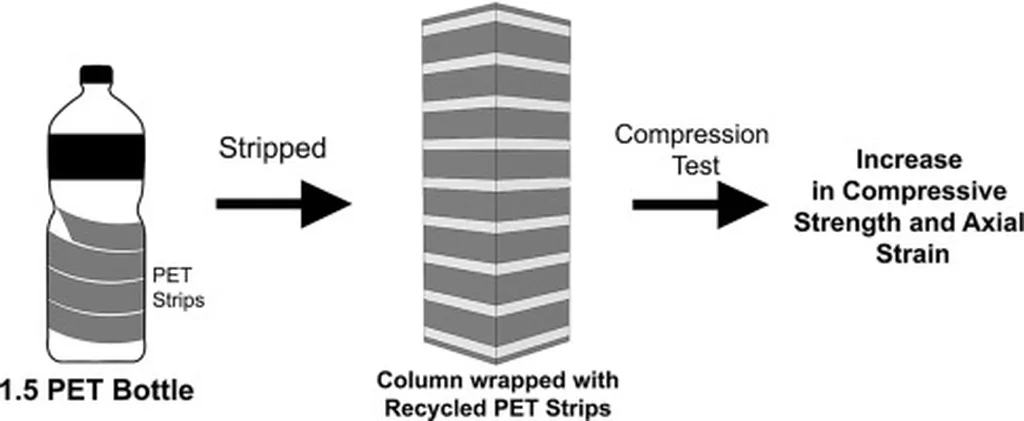In a significant stride towards sustainable construction materials, researchers have demonstrated the potential of recycled polyethylene terephthalate (rPET) composites for structural applications, offering a promising alternative to traditional materials in civil engineering. The study, led by Krzysztof Adam Ostrowski from the Faculty of Civil Engineering at Cracow University of Technology, explores the use of rPET derived from bottle waste flakes, combined with alkaline-resistant glass fibres, to create high-performance composites suitable for cementitious and alkaline environments.
The research, published in *Scientific Reports* (which translates to *Nature Research: Scientific Reports* in English), addresses the urgent need for eco-friendly materials in construction, particularly for components like anchors and connectors. “The growing demand for sustainable solutions in civil engineering has driven us to investigate high-value applications for recycled materials,” Ostrowski explained. “Our focus on rPET composites aims to bridge the gap between waste management and high-performance construction materials.”
The study evaluated the mechanical properties of composites reinforced with 30, 40, and 50 weight percent (wt%) fibres. The addition of fibres not only improved the flow characteristics and crystallization kinetics but also facilitated the demoulding process, enhancing the overall mechanical properties of the composites. Notably, the tensile modulus reached up to approximately 19 GPa, flexural strength up to around 234 MPa, and Charpy impact strength up to about 31 kJ/m². These properties are comparable to those of commercial virgin PET composites, highlighting the potential of recycled materials in structural applications.
Micromechanical analysis and scanning electron microscopy (SEM) observations confirmed the high quality and homogeneity of the composites, further validating their suitability for construction components. “The favourable properties and processing characteristics of these composites open up new possibilities for sustainable construction,” Ostrowski added. “We are particularly excited about their potential application in injection-moulded construction components, including anchors, which are currently under further investigation.”
The implications of this research extend beyond civil engineering, offering a blueprint for other industries seeking to reduce their environmental footprint. For the energy sector, the development of sustainable materials could lead to more eco-friendly infrastructure projects, from wind turbine foundations to solar panel mounting systems. As the demand for green technologies grows, the adoption of recycled PET composites could play a pivotal role in shaping the future of sustainable construction.
This study not only underscores the importance of recycling in the circular economy but also demonstrates how innovative research can transform waste materials into high-value products. As Ostrowski and his team continue to explore the applications of these composites, the construction industry stands on the brink of a sustainable revolution, driven by the power of recycled materials and cutting-edge technology.

